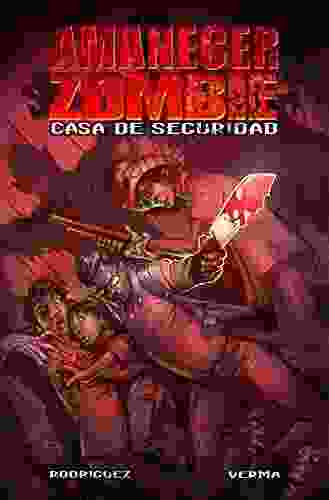24 Categories of Problems from Basic to Advanced Dosage Calculation Success

Dosage calculation is a critical skill for healthcare professionals, as it ensures the safe and effective administration of medications. Students may encounter a wide range of dosage calculation problems, from basic conversions to complex calculations involving multiple medications and routes of administration. This article provides a comprehensive overview of 24 categories of dosage calculation problems, ranging from basic to advanced concepts. Each category is explained with clear examples and helpful tips to guide students towards successful dosage calculation.
- Example: Convert 500 mg to grams.
- Tip: Remember the conversion factor: 1 gram = 1000 milligrams.
- Example: A solution has a concentration of 10 mg/mL. How many milligrams are in 5 mL of this solution?
- Tip: Use the formula: Concentration (mg/mL) x Volume (mL) = Amount (mg).
- Example: You have a drug with a concentration of 10 mg/mL and need to dilute it to a concentration of 5 mg/mL. How much diluent should you add to 5 mL of the concentrated drug?
- Tip: Use the formula: Concentration1 (mg/mL) x Volume1 (mL) = Concentration2 (mg/mL) x Volume2 (mL).
- Example: A patient is prescribed 25 mg of a drug every 8 hours. How many milligrams should the patient receive every 12 hours?
- Tip: Set up a ratio: Dose1 (mg) / Time1 (hours) = Dose2 (mg) / Time2 (hours).
- Example: A doctor prescribes 1.5 g of a drug to be given every 6 hours. The drug is available in 500 mg tablets. How many tablets should the patient receive every dose?
- Tip: Convert all units to the same system, then cancel out the units to solve for the unknown.
- Example: A child's body surface area is 0.5 m2. The drug dosage is 10 mg/m2. How many milligrams of the drug should the child receive?
- Tip: Multiply the body surface area by the dosage per unit area.
- Example: A child is prescribed 100 mg/kg of a drug. The child weighs 25 kg. How many milligrams of the drug should the child receive?
- Tip: Multiply the weight by the dosage per unit weight.
- Example: A patient in the intensive care unit is receiving a continuous infusion of a drug at a rate of 10 mcg/kg/min. The patient weighs 75 kg. How many milliliters of the drug should be infused per hour?
- Tip: Convert the rate to mL/hr using the patient's weight and the drug concentration.
- Example: A patient is receiving a combination of two drugs, each with a different half-life and clearance rate. How do you calculate the optimal dosing regimen to maintain therapeutic drug levels?
- Tip: Use pharmacokinetic principles to determine the frequency and dosage of each drug.
- Example: A patient is taking two medications that interact with each other, increasing the risk of side effects. How do you adjust the dosage of each medication to minimize interactions?
- Tip: Refer to drug interaction references and consult with a pharmacist.
- Example: A nurse accidentally administers 100 mg of a drug instead of 50 mg. How do you calculate the error and take appropriate corrective action?
- Tip: Calculate the discrepancy between the intended and administered dose, then assess the severity of the error.
- Example: A patient has a history of allergic reactions to certain medications. How do you ensure that the patient receives the correct medication and dosage, minimizing the risk of adverse events?
- Tip: Use medication reconciliation tools, verify orders with the prescriber, and monitor the patient closely for any signs of adverse reactions.
- Example: A patient is prescribed an intravenous infusion of a drug at a rate of 100 mL/hr. The IV bag contains 500 mL of the drug solution. How long will the infusion last?
- Tip: Divide the volume of the solution by the drip rate.
- Example: A patient is prescribed an intramuscular injection of a drug with a concentration of 100 mg/mL. The patient needs to receive 50 mg of the drug. How many milliliters of the solution should be injected?
- Tip: Divide the desired dose by the concentration of the solution.
- Example: A patient is prescribed a subcutaneous injection of a drug with a concentration of 200 mg/mL. The patient needs to receive 100 mg of the drug. How many milliliters of the solution should be injected?
- Tip: Divide the desired dose by the concentration of the solution.
- Example: A patient is prescribed a topical application of a cream with a concentration of 1%. The patient needs to apply 5 g of the cream to the affected area. How much of the drug will be applied?
- Tip: Multiply the weight of the cream by the concentration.
- Example: A patient is prescribed an inhaler with a dosage of 200 mcg per puff. The patient needs to take two puffs every 6 hours. How much of the drug will the patient receive per day?
- Tip: Multiply the dosage per puff by the number of puffs and the number of times per day.
4.6 out of 5
| Language | : | English |
| File size | : | 10391 KB |
| Text-to-Speech | : | Enabled |
| Screen Reader | : | Supported |
| Enhanced typesetting | : | Enabled |
| Print length | : | 165 pages |
| Lending | : | Enabled |
Do you want to contribute by writing guest posts on this blog?
Please contact us and send us a resume of previous articles that you have written.
 Top Book
Top Book Novel
Novel Fiction
Fiction Nonfiction
Nonfiction Literature
Literature Paperback
Paperback Hardcover
Hardcover E-book
E-book Audiobook
Audiobook Bestseller
Bestseller Classic
Classic Mystery
Mystery Thriller
Thriller Romance
Romance Fantasy
Fantasy Science Fiction
Science Fiction Biography
Biography Memoir
Memoir Autobiography
Autobiography Poetry
Poetry Drama
Drama Historical Fiction
Historical Fiction Self-help
Self-help Young Adult
Young Adult Childrens Books
Childrens Books Graphic Novel
Graphic Novel Anthology
Anthology Series
Series Encyclopedia
Encyclopedia Reference
Reference Guidebook
Guidebook Textbook
Textbook Workbook
Workbook Journal
Journal Diary
Diary Manuscript
Manuscript Folio
Folio Pulp Fiction
Pulp Fiction Short Stories
Short Stories Fairy Tales
Fairy Tales Fables
Fables Mythology
Mythology Philosophy
Philosophy Religion
Religion Spirituality
Spirituality Essays
Essays Critique
Critique Commentary
Commentary Glossary
Glossary Bibliography
Bibliography Index
Index Table of Contents
Table of Contents Preface
Preface Introduction
Introduction Foreword
Foreword Afterword
Afterword Appendices
Appendices Annotations
Annotations Footnotes
Footnotes Epilogue
Epilogue Prologue
Prologue C A Milson
C A Milson Joelle Jones
Joelle Jones Kazuo Ishiguro
Kazuo Ishiguro James Patterson
James Patterson David Clow
David ClowCelestia Quixs
 Emma Parsons
Emma Parsons Martha Bechtel
Martha Bechtel Catherine Taylor
Catherine Taylor Wendy Mackenzie Pease
Wendy Mackenzie Pease Ben Carlson
Ben Carlson Cheri Fraker
Cheri Fraker Gillian Flynn
Gillian Flynn R B Lemberg
R B Lemberg Rita Duponty
Rita Duponty Joanne Limburg
Joanne Limburg Haley Fox
Haley Fox Elaine Keillor
Elaine Keillor Dafna Vitale Ben Bassat
Dafna Vitale Ben Bassat Mois Benarroch
Mois Benarroch
Light bulbAdvertise smarter! Our strategic ad space ensures maximum exposure. Reserve your spot today!

 Edward ReedDelve into the Enchanting World of Kimetsu No Yaiba Volume 14: A Journey of...
Edward ReedDelve into the Enchanting World of Kimetsu No Yaiba Volume 14: A Journey of... Julio CortázarFollow ·6k
Julio CortázarFollow ·6k Edgar Allan PoeFollow ·16.6k
Edgar Allan PoeFollow ·16.6k Darrell PowellFollow ·16.8k
Darrell PowellFollow ·16.8k Peter CarterFollow ·2k
Peter CarterFollow ·2k Harrison BlairFollow ·7.7k
Harrison BlairFollow ·7.7k Fyodor DostoevskyFollow ·6.6k
Fyodor DostoevskyFollow ·6.6k Brian BellFollow ·3k
Brian BellFollow ·3k Leon FosterFollow ·12.4k
Leon FosterFollow ·12.4k

 Patrick Hayes
Patrick HayesDeath on Stage: Euphemia Martins Mystery 16
Synopsis In the...

 Benji Powell
Benji Powell1001 Best Baking Recipes Of All Time
Baking is a fun and...

 Terry Bell
Terry BellDestined War of the Covens: A Supernatural Saga of Power,...
Welcome to the...

 Mark Twain
Mark TwainBitcoin For Mere Mortals: A Comprehensive Guide for...
Bitcoin is a...

 Dennis Hayes
Dennis HayesThe Best Budget Gaming PC 2024: Build the Ultimate Gaming...
Are you looking to build the best budget...
4.6 out of 5
| Language | : | English |
| File size | : | 10391 KB |
| Text-to-Speech | : | Enabled |
| Screen Reader | : | Supported |
| Enhanced typesetting | : | Enabled |
| Print length | : | 165 pages |
| Lending | : | Enabled |












